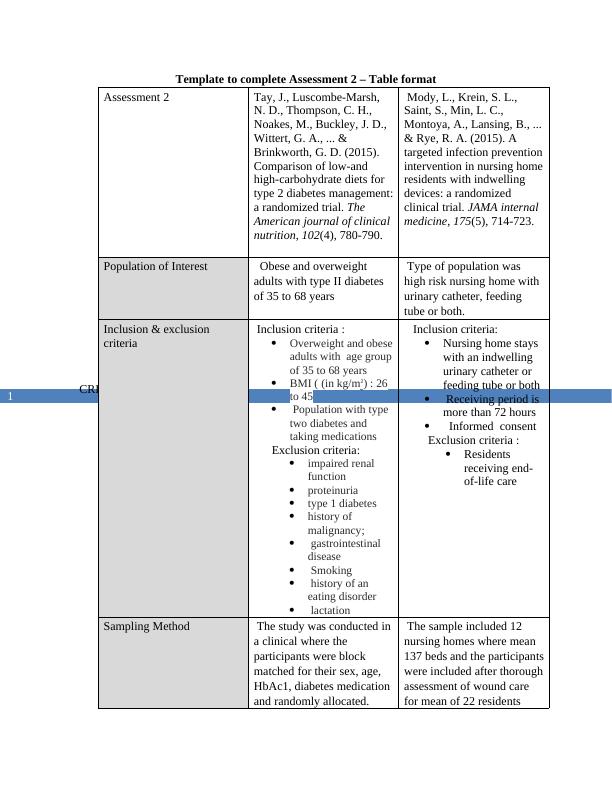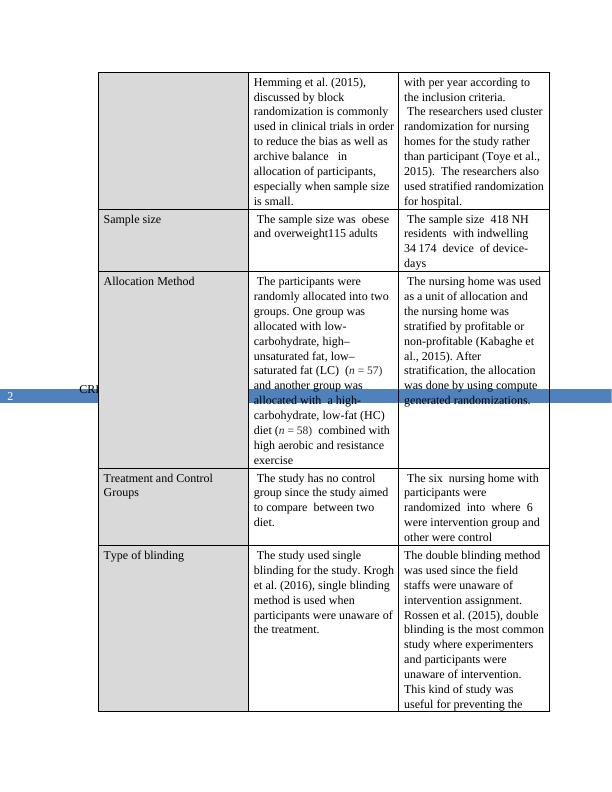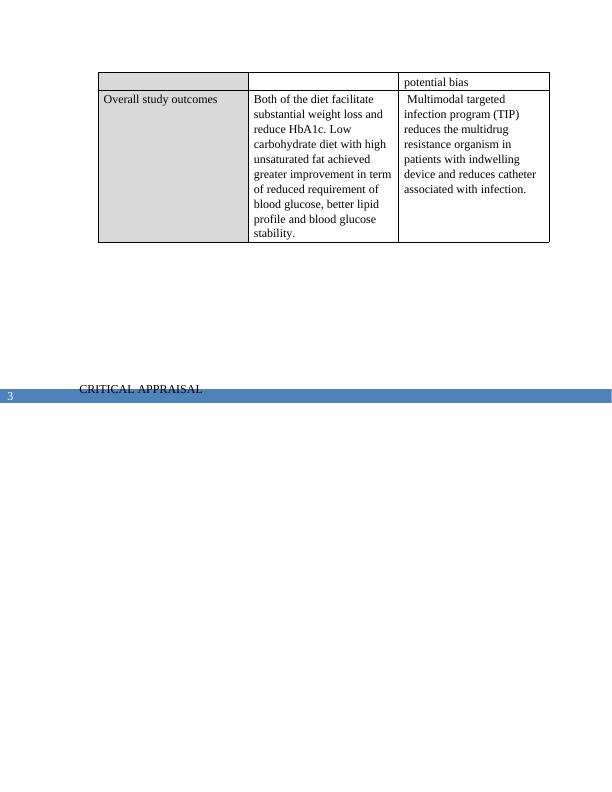Comparison of Low and High-Carbohydrate Diets for Type 2 Diabetes Management: A Randomized Trial
Students are required to conduct a literature search, select two peer-reviewed journal articles published within the last 5 years, and provide a summary of the articles. The articles must be Randomised Controlled Trials (RCTs) in the field of healthcare. The selected articles' abstracts should be posted on the discussion board by the specified due date.
Added on 2022-12-01
About This Document
Comparison of Low and High-Carbohydrate Diets for Type 2 Diabetes Management: A Randomized Trial
Students are required to conduct a literature search, select two peer-reviewed journal articles published within the last 5 years, and provide a summary of the articles. The articles must be Randomised Controlled Trials (RCTs) in the field of healthcare. The selected articles' abstracts should be posted on the discussion board by the specified due date.
Added on 2022-12-01
End of preview
Want to access all the pages? Upload your documents or become a member.




